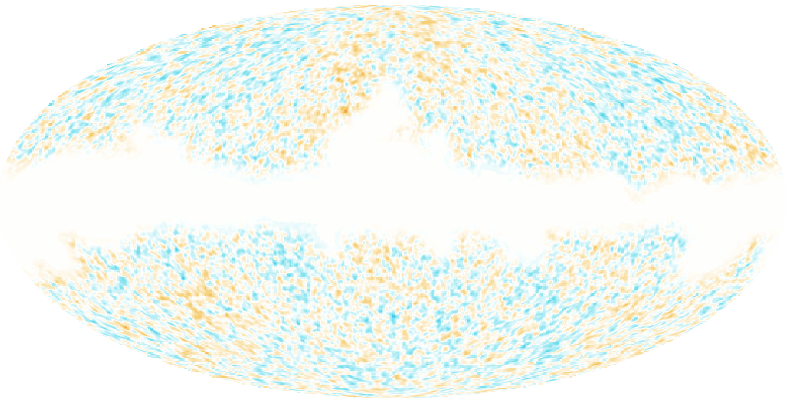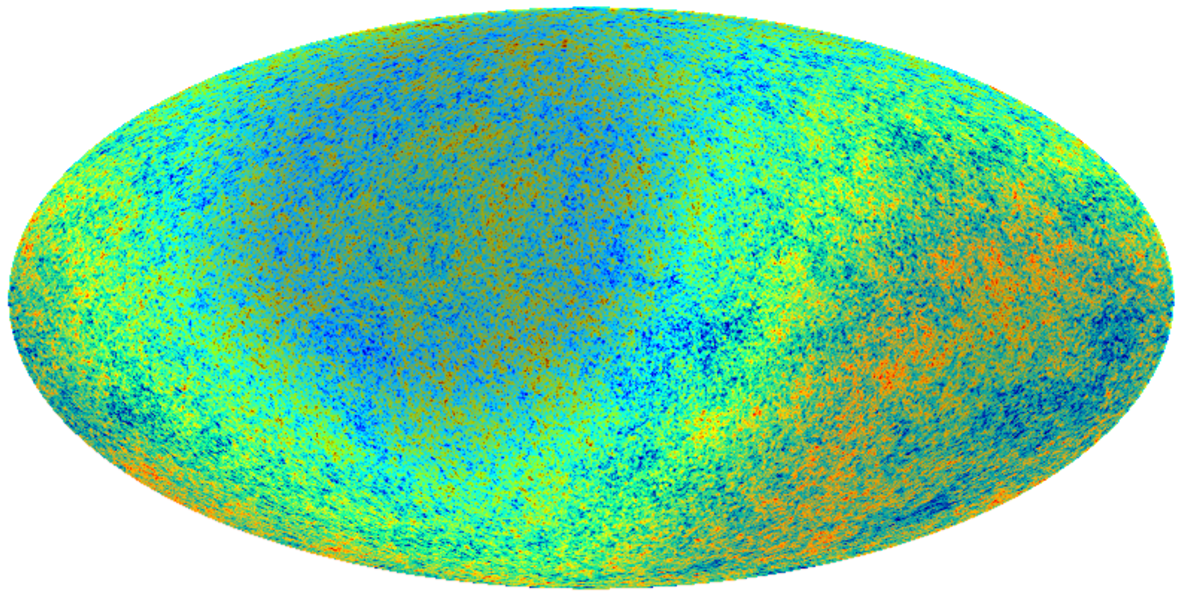

My current research focus is the CMB polarization observations. Following the completion of the Planck satellite mission the global CMB community's focus has shifted to polarization observations from ground and space observatories. These observations have various new challenges as these orders of magnitude below the CMB temperature observations. The challenges include astrophysical foreground removal, E-to-B mode leakage correction, optimal estimator construction and systematics mitigation. The challenge for CMB observations are to mitigate these challenges for various upcoming sub-orbital missions.
In particular, my colleagues and I are developing the foreground separation and power spectrum estimation pipeline for the Ali CMB Polarization Telescope. We are testing performance of various Internal Linear Combination methods for foreground cleaning and we have developed various E-to-B leakage cleaning and power spectrum estimators for this work.

Example of foreground cleaned B-mode sky obtained with harmonic space Internal Linear Combination method with partial sky coverage. Demonstration of foreground cleaning for next generation CMB polarization mission solving problem of E-to-B leakage and polarized foreground signal

The famous Hemispherical Power Asymmetry signal as seen in Planck 2015 temperature data for SMICA processed maps. The asymmetry is about 7% in magnitude but is exaggerated in this image to explicitly show the pattern overlayed on the CMB temperature map. The higher power is seen in roughly the south ecliptic hemisphere while the north ecliptic hemisphere is lower power. This is based on Ghosh et al. JCAP 2016:01.
The Cosmological Principle is a key assumption of the LCDM model of cosmology. This asserts that cosmological observations are statistically isotropic. However, CMB temperature observations have found tantalising departures from this assertion, albeit at low significance. However, adding more observations from CMB polarization can give us a clearer understanding of violations of the Cosmological Principle. I work on testing the statistical isotropy of CMB polarization data and improving the constraints on any isotropy violation by using the polarization data.
The large-scale structures have their own set of observations hinting violations of statistical isotropy but currently there are very few tests of isotropy violations that can combine the CMB data and the large-scale structures data. In the past I have worked on several radio galaxy catalogs to test for isotropy violations and impact of systematics. Current observations of large-scale are either noisy or with high levels of systematics making isotropy testing unreliable. But, the upcoming large-scale structure surveys with Euclid, SKA or LSST would provide high quality data at different redshifts to test for isotropy violations. As these experiments start up , we as a part of the community should test and plan for systematics mitigation.